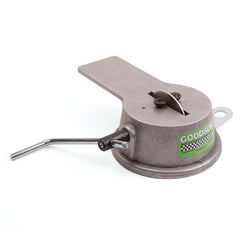By Dave Monyhan (retired)
We're getting close to the end of our series on Rod & Piston Work. So far we've talked about Connecting Rod Basics, Measuring, Machining and Removing & Installing Pins and Bushings. In this edition of Tech Notes, we'll be looking at Piston Ring Fitting. A lot of science goes into the design and manufacture of piston rings. We don't have the time (or room) for that in this post. We will, however, try to get a piston ring expert to share some of his knowledge with us in the near future.
Okay, we all know that piston rings and pistons have always been a part of the internal combustion since its inception way back in the 1800s. We also know that piston rings are designed to seal the cylinder to create compression so the ignition can light the air fuel mixture. And we know that the piston and the cylinder wall must have a specific clearance for oil.
But what about the piston ring? Why can’t you just take them out of the box and put them on the piston and finish assembling the engine? Well actually you can take the piston ring right out of the box and yes, you can install them on the pistons and yes, you can then finish assembling the engine and for the standard “stock” or “grocery getter” engine you will probably be just fine. However that theory will only work for the older style cast iron engines with standard oversize bores. For example, a Small Block Chevy has a 4” bore. If you bore and hone to .030” oversize, the out of the box ring and piston set will not have to be end-gapped. I do recommend, though, that with every engine job you check everything including ring gap even for a stock or grocery getting engine.
But, if you are doing any kind of performance work or adding custom pistons with file-to-fit rings or varying bore sizes you must file to fit. Also if you are changing the fuel delivery system from carburetion to fuel injection, adding nitrous, blowers or turbos then YES, you need to file to fit the piston rings. It is essential that you follow the ring gap directions supplied with your piston and ring packs when you buy them.
What about piston ring gap?
The standing theory is that the piston ring gap is supposed to be .004” for every inch of cylinder bore diameter. We all knew that from high school auto shop.
So how do you file a piston ring to the proper gap?
Chart courtesty of Mahle-Clevite.
www.mahleclevite.com



Left to Right: Goodson Manual Piston Ring Grinder (PRF-500), Goodson Manual Piston Ring Grinder (PRF-250), Goodson Powered Piston Ring Filer (PRF-812DW)
At Goodson we offer both manual and electric piston ring filers. But, before you can gap the ring you need to first…..square the ring in the bore.
Once the ring is squared in the bore and you have the correctly measured how much material you need to remove from the gap, it’s time to load the piston ring into the ring filer.
We also need to deal with any “burrs left on the ring gap by using the de-burring wheel on the right side of the PRF-812DW
So as you can see piston ring gaping is very straight forward and actual pretty simple with the correct tools.
Like any procedure there can and will be exceptions so if you get in a bind just call the Goodson Tech Department (800-533-8010) and they will help you fully understand this A to Z procedure.

